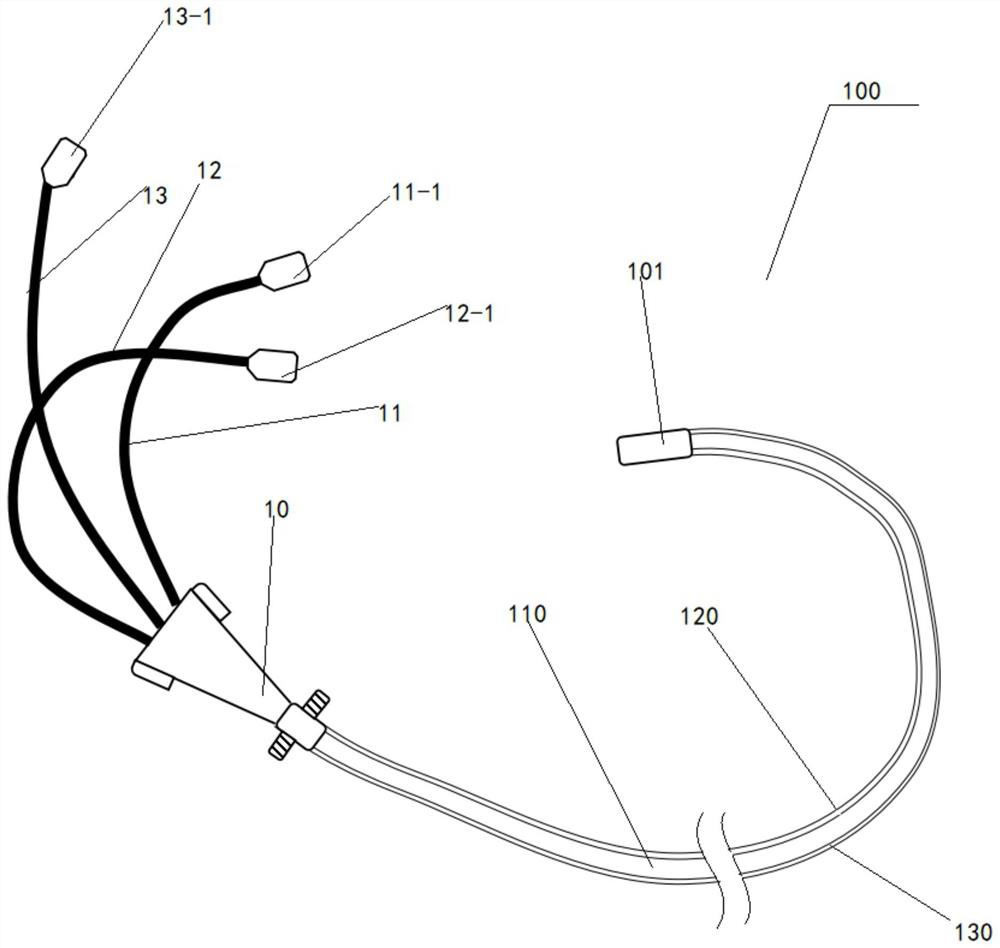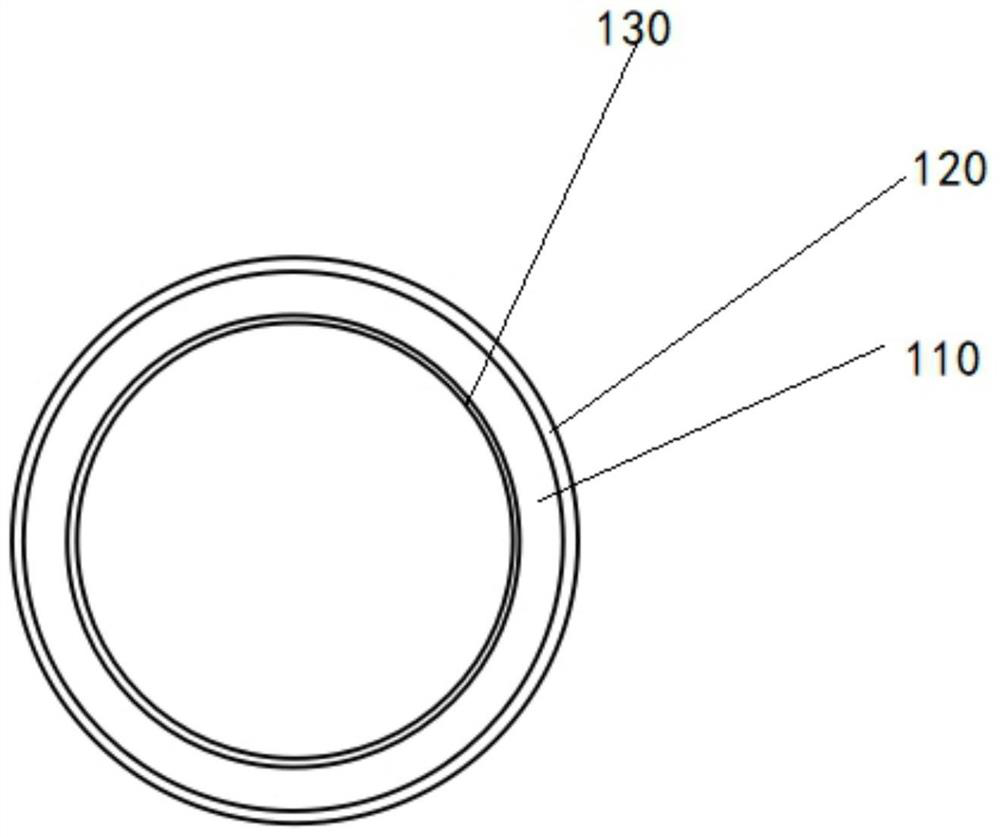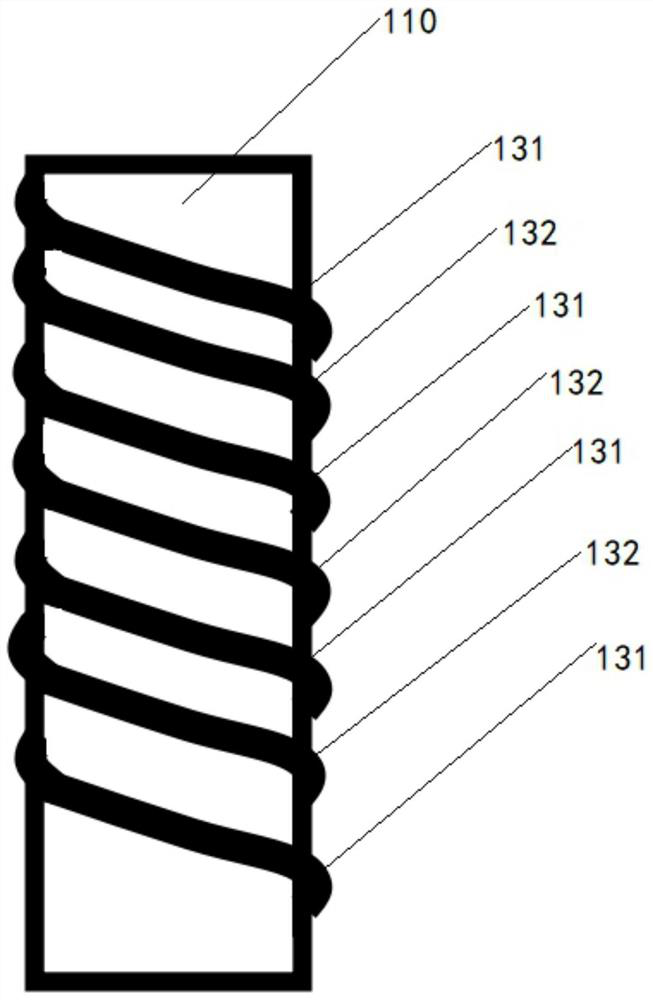Nanometer double-resisting deep venous catheter
A deep vein and catheter technology, used in catheters, coatings, etc., can solve the problems of increasing bleeding and infection of patients, increasing infection and thrombosis, and not taking too long for catheterization.
- Summary
- Abstract
- Description
- Claims
- Application Information
AI Technical Summary
Problems solved by technology
Method used
Image
Examples
Embodiment 1
[0041] This Example 1 provides a nano-dual anti-deep venous conduit, including a deep vein catheter body 100;
[0042] The deep venous catheter body 100 is composed of a deep venous catheter body 110, a deep intravenous tube outer bundling layer 120, and a deep intravenous ductin sustained release layer 130;
[0043] The deep venous catheter body 100 has a medium communication line having a protective head 101, and the other end is mounted with a splitter 10, and the first branch 10, the second branch pipe 12, and the third branch are achieved by the splitter 10. 13 Subcomition communication with the deep venous catheter body 100;
[0044] In order to achieve the end of the input first branch 11 of different injection drugs having the injection terminal 11-1, the end of the second branch tube 12 has the injection terminal 12-1, the end of the third branch 13 has injection terminals 13-1, in addition to the implementation The control of the branch can also be equipped with a valve ...
Embodiment 2
[0053] This Example 2 provides a nano-dual anti-deep intravenous catheter, including a deep venous catheter body 100;
[0054] The deep venous catheter body 100 is composed of a deep venous catheter body 110, a deep intravenous tube outer bundling layer 120, and a deep intravenous ductin sustained release layer 130;
[0055] The deep venous catheter body 100 has a medium communication line having a protective head 101, and the other end is mounted with a splitter 10, and the first branch 10, the second branch pipe 12, and the third branch are achieved by the splitter 10. 13 Subcomition communication with the deep venous catheter body 100;
[0056]In order to achieve the end of the input first branch 11 of different injection drugs having the injection terminal 11-1, the end of the second branch tube 12 has the injection terminal 12-1, the end of the third branch 13 has injection terminals 13-1, in addition to the implementation The control of the branch can also be equipped with a...
Embodiment 3
[0069] This Example 3 provides a nano-dual anti-deep venous catheter, including a deep venous catheter body 100;
[0070] The deep venous catheter body 100 is composed of a deep venous catheter body 110, a deep intravenous tube outer bundling layer 120, and a deep intravenous ductin sustained release layer 130;
[0071] The deep venous catheter body 100 has a medium communication line having a protective head 101, and the other end is mounted with a splitter 10, and the first branch 10, the second branch pipe 12, and the third branch are achieved by the splitter 10. 13 Subcomition communication with the deep venous catheter body 100;
[0072] In order to achieve the end of the input first branch 11 of different injection drugs having the injection terminal 11-1, the end of the second branch tube 12 has the injection terminal 12-1, the end of the third branch 13 has injection terminals 13-1, in addition to the implementation The control of the branch can also be equipped with a val...
PUM
 Login to View More
Login to View More Abstract
Description
Claims
Application Information
 Login to View More
Login to View More - R&D
- Intellectual Property
- Life Sciences
- Materials
- Tech Scout
- Unparalleled Data Quality
- Higher Quality Content
- 60% Fewer Hallucinations
Browse by: Latest US Patents, China's latest patents, Technical Efficacy Thesaurus, Application Domain, Technology Topic, Popular Technical Reports.
© 2025 PatSnap. All rights reserved.Legal|Privacy policy|Modern Slavery Act Transparency Statement|Sitemap|About US| Contact US: help@patsnap.com



